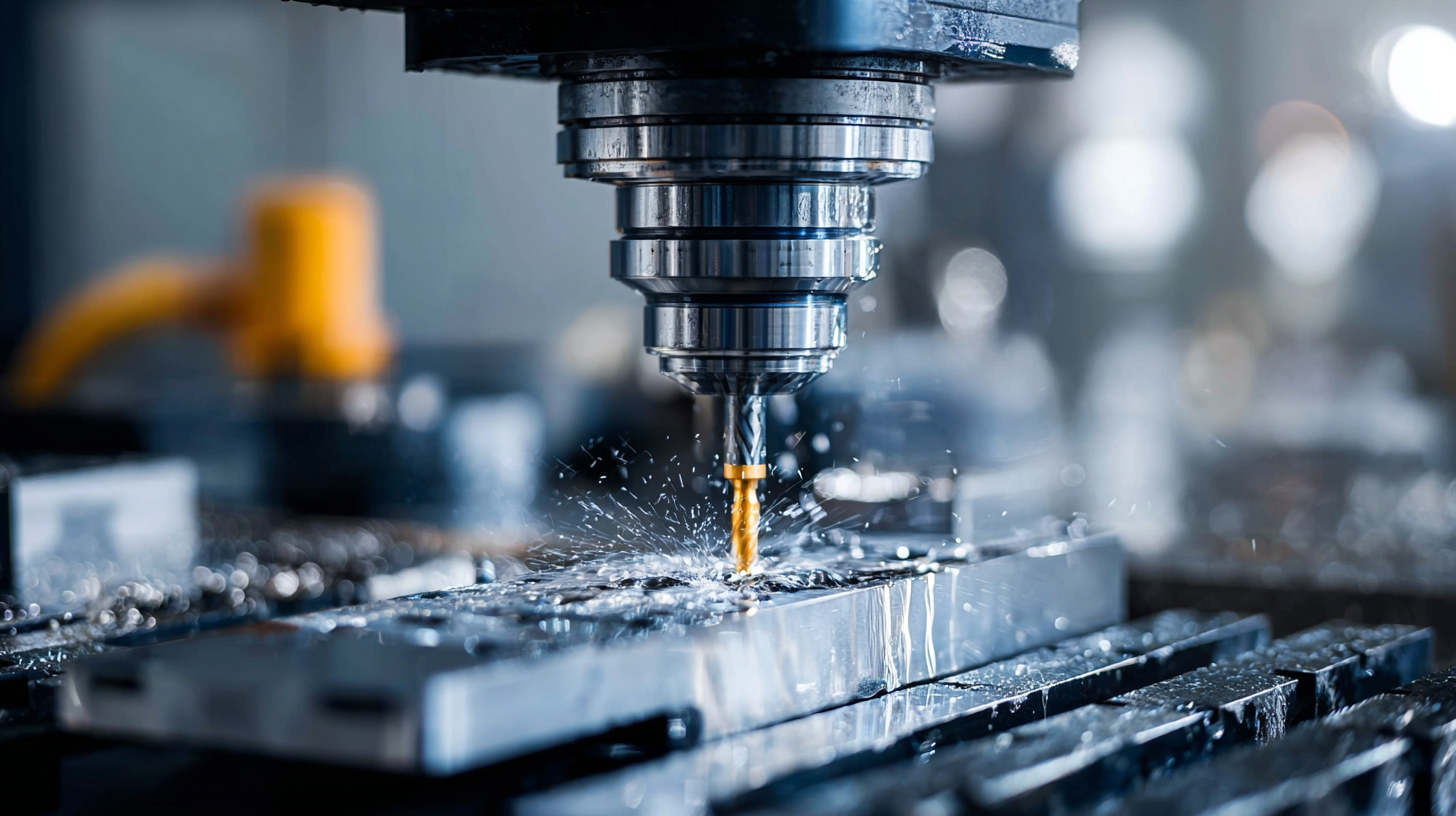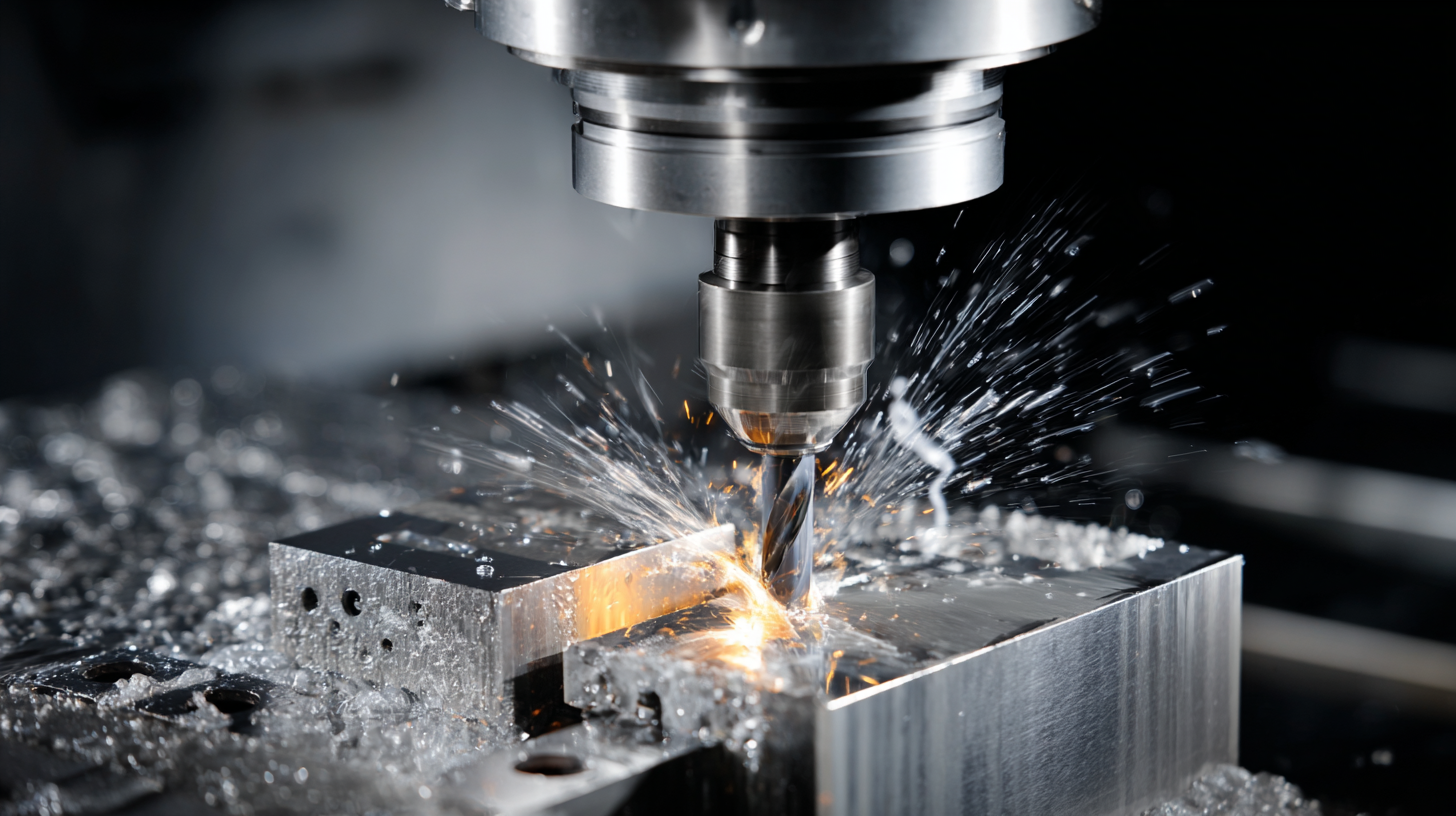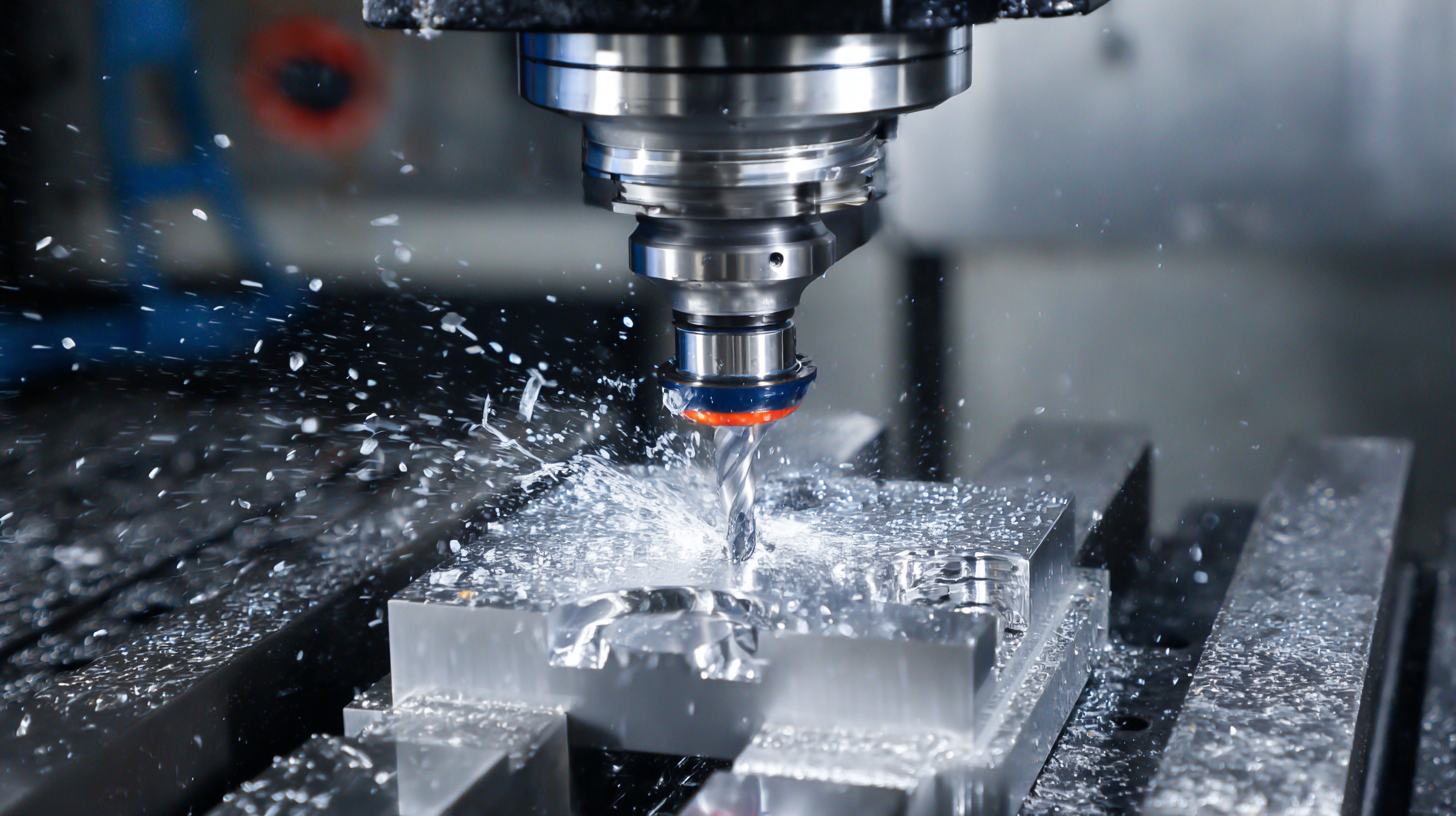As we approach 2025, the landscape of CNC milling services is on the brink of a significant transformation. With advancements in technology and evolving industry standards, the focus is shifting towards enhancing quality and efficiency while meeting the burgeoning demands of various sectors. This blog will explore the emerging trends in CNC milling services, highlighting the top strategies that manufacturers can adopt to remain competitive in a rapidly changing marketplace.

By examining key innovations and methodologies, we will provide insights into how businesses can leverage CNC milling services to optimize production processes, reduce costs, and ultimately deliver superior products. Join us as we delve into the future of CNC milling and the pivotal role it will play in shaping the manufacturing industry in the coming years.
As we look ahead to 2025, the CNC milling services industry is poised for significant transformation driven by key innovations. The global CNC machine market is expected to expand from $101.22 billion in 2025 to an impressive $195.59 billion by 2032, reflecting a robust CAGR of 9.9%. This surge is largely attributed to advancements in digital technologies, such as IoT-enabled equipment and AI-driven analytics that enhance operational efficiency. Manufacturers are leveraging these technologies to not only automate processes but also to gain actionable insights that optimize production flows.
Particularly noteworthy is China's rapid emergence as a leader in advanced manufacturing sectors, with heightened innovation capabilities stemming from its educational institutions and progressive domestic companies. Furthermore, trends in CNC milling are shifting towards increased incorporation of Industry 4.0 practices. This will empower manufacturers to respond swiftly to market demands while maintaining stringent quality standards. With the anticipated growth and transformative innovations, CNC milling services in 2025 will undoubtedly see heightened quality and efficiency, paving the way for a new era in manufacturing excellence.
The CNC milling industry is poised to witness remarkable transformations by 2025, largely driven by emerging technologies that enhance both quality and efficiency. As reported by recent industry analyses, the integration of advanced automation and artificial intelligence is expected to elevate precision levels in machining processes by up to 30%. Additionally, the introduction of smart sensors will provide real-time data on equipment performance, leading to more informed decision-making and reduced downtime.
To optimize your CNC milling operations, consider implementing Industry 4.0 technologies. Investing in IoT devices can facilitate better monitoring of your machinery, leading to significant reductions in maintenance costs. Also, adopting additive manufacturing techniques alongside traditional milling processes can enhance the versatility and quality of outputs, with studies indicating a potential 25% improvement in production efficiency.
Moreover, the rising use of hybrid CNC machines, which combine subtractive and additive manufacturing capabilities, is set to revolutionize the sector. These innovations allow for intricate designs that were previously unachievable, ensuring that companies remain competitive in the marketplace. Keeping abreast of these developments will be crucial for manufacturers aiming to deliver top-quality services and maintain operational excellence in the years to come.
As we look ahead to 2025, sustainability trends in the CNC milling industry are poised to redefine operational standards. According to a recent report by Technavio, the global CNC machining market is expected to grow by USD 1.6 billion from 2020 to 2025, driven in part by companies prioritizing eco-friendly manufacturing processes. This shift is characterized by the adoption of renewable energy sources and environmentally friendly materials, reflecting a growing corporate responsibility toward reducing carbon footprints.
Additionally, advancements in technology are enabling more efficient use of resources. The use of machine learning and AI in CNC milling is becoming increasingly prevalent, resulting in optimized cutting processes that not only enhance precision but also minimize waste. Reports indicate that companies implementing smart manufacturing solutions can achieve waste reductions of up to 30%. As consumers demand more sustainable products, the CNC milling sector's commitment to reducing environmental impact will not only help companies comply with regulations but also improve their competitive advantage in the marketplace.

As we look toward 2025, the landscape of CNC milling services is set to be transformed by the contrast between traditional and modern practices. Traditional methods typically rely on manual setups and conventional machining techniques, which can limit efficiency and scalability. According to a report from the CNC Milling Market Outlook, businesses that utilize outdated manual processes can experience production downtime of up to 30%, significantly hindering their competitive edge.
In contrast, modern CNC milling practices leverage advanced technologies, including automation and real-time data analytics. Recent studies suggest that facilities implementing automated CNC systems can achieve production efficiency gains of up to 50%. Additionally, the introduction of cloud-based solutions enables manufacturers to analyze performance metrics and optimize workflows dynamically. The adoption of these modern practices not only enhances quality through precision machining but also reduces lead times, allowing companies to respond swiftly to market demands.
With the anticipated advances in CNC technology, including the integration of artificial intelligence and machine learning by 2025, businesses must adapt to these innovations. The shift from traditional to modern CNC milling practices is no longer optional; it is essential for staying competitive in a rapidly evolving manufacturing landscape.
| Aspect | Traditional CNC Milling | Modern CNC Milling |
|---|---|---|
| Setup Time | 2-4 hours | 30 minutes |
| Material Waste | 15% | 5% |
| Operational Efficiency | 60% | 90% |
| Precision | ±0.05 mm | ±0.01 mm |
| Energy Consumption | 20 kWh | 8 kWh |
| Software Utilization | Basic CAD/CAM | Advanced CAD/CAM with AI |
As we look ahead to 2025, the CNC milling services market is on the brink of transformation, driven primarily by customer-centric approaches. Businesses are increasingly recognizing the importance of aligning their services with customer needs, paving the way for enhanced satisfaction and loyalty. This shift means that CNC milling service providers must adopt flexible production processes that can quickly adapt to varying customer specifications.
To meet the heightened demand for quality and efficiency, companies should focus on integrating advanced technologies such as automation and real-time monitoring systems. These innovations not only streamline operations but also improve precision, ultimately delivering top-notch results.
**Tip:** Engage in open dialogues with your clients to gain insights into their specific requirements. This proactive communication can help you anticipate future needs and tailor your services accordingly.
Moreover, fostering a culture of continuous improvement within the organization can lead to substantial gains in efficiency. By regularly training staff on the latest techniques and technologies in CNC milling, businesses can ensure they remain competitive and responsive to market changes.
**Tip:** Implement feedback loops where customers can express their satisfaction with delivered products. This feedback is invaluable for refining processes and enhancing service quality.

